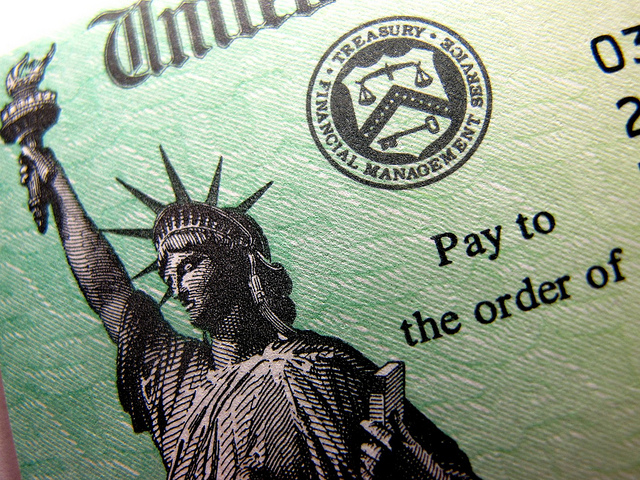When investors buy bonds with negative yields, and hold them to maturity, they will automatically lose money. Yet, with worldwide growth petering out, persistent low inflation and uncertainty about everything from Brexit to the US Presidential election, money has been pouring into government debt, pushing up prices and driving down yields. Currently there is about $13 trillion worth of global sovereign debt yielding less than zero. Last year, Switzerland became the first country to sell debt at negative yields, followed by Japan, which did so in March. And then earlier this month, Germany became the first eurozone country to sell 10-year bonds with a negative yield in a government auction.
Normally, you would purchase a bond at a discount, meaning that you would pay $99.50 for a bond. Then at the end of the term, the government would send you $100 at maturity. But in the topsy-turvy negative yield world, you buy the bond at a premium, say $101 and only get back $100 at maturity.
Why would anyone lend money to a government for ten years, only to be contractually obligated to see less than the total amount returned? Many investors believe that global central banks (ECB, Bank of England and Bank of Japan) will continue to buy bonds to stimulate economies and therefore, the price of bonds will keep rising. Others purchase negative yielding debt because they need a safe, liquid investment. It is in fact cheaper to lose a bit of money on a government bond than to park vast sums in a vault and then pay a guard to watch over the stash.
An investor might also accept a negative interest rate because she thinks that she can sell that same bond for even more money to someone more desperate for safety. Or perhaps she fears future craziness in the financial world and wants to be sure to keep a portion of her portfolio stable. The former is a variation of the greater fool theory, while the later is a variation of paying for portfolio insurance against future economic disaster. There is one more point to consider: with no inflation to erode purchasing power, investors are choosing to accept lower yields, because “even if you earn zero percent or less on your savings, you still come out ahead,” according to Capital Economics.
Amid the low/negative yield world, the Fed is set to begin a two-day policy meeting this week. It is widely expected to do a whole lot of nothing, but there will be close scrutiny of the accompanying statement. The focus will be on how the Fed describes economic conditions. While job creation has tapered off to 170,000 per month, down by about 50,000 from a year ago, a slowdown is consistent with an aging recovery. With wages picking up, underlying retail sales growth close to a two-year high and core inflation inching towards the Fed’s desired target of two percent, the central bank may surprise markets with a September rate hike. Right now the bond market implies just a one in five chance of that occurring, but stay tuned for Chair Janet Yellen’s appearance at the Jackson Hole symposium on 26th August. Many Fed chairs have used Jackson Hole as place to float future policy moves.
Any rate increase could come as a big surprise to all of those sovereign bondholders. It is worth noting that a one percent increase in interest rates would push down 10-year prices by 9 percent – so much for safety!
MARKETS: Large indexes closed at all-time highs for the second week in a row.
- DJIA: 18,570, up 0.3% on week, up 6.6% YTD
- S&P 500: 2175, up 0.6% on week, up 6.4% YTD
- NASDAQ: 5100, up 1.4% on week, up 1.8% YTD
- Russell 2000: 1212, up 0.6% on week, up 6.8% YTD
- 10-Year Treasury yield: 1.566%, (from 1.547% a week ago)
- British Pound/USD: $1.3105 (from $1.3214)
- September Crude: $44.19, down 3.8% on week
- August Gold: at $1,323.40, down 0.3% on week
- AAA Nat'l avg. for gallon of reg. gas: $2.17 (from $2.22 wk ago, $2.74 a year ago)
THE WEEK AHEAD: While the US economy is not exactly firing on all cylinders, it is far better than other developed nations. When the government releases the first estimate of second quarter growth this week, economists expect a rebound to 2.5 percent, up from the disappointing 1.1 percent level in Q1.
Mon 7/25:
10:30 Dallas Fed Mfg
Tues 7/26:
Apple, Caterpillar, Under Armour, Verizon Communications
9:00 S&P Case-Shiller HPI
10:00 New Home Sales
10:00 Consumer Confidence
FOMC Meeting Begins
Weds 7/27:
Boeing, Coca-Cola, Whole Foods Market
8:30 Durable Goods Orders
10:00 Pending Home Sales Index
2:00 FOMC Meeting Announcement
Thursday 7/28:
CBS, Dow Chemical, Ford, Marriott
8:30 International Trade
Friday 7/29:
ExxonMobil, Merck, United Parcel Service, Xerox
8:30 GDP
8:30 Employment Cost Index
9:45 Chicago PMI
10:00 Consumer Sentiment
![Jill on Money [ Archive]](http://images.squarespace-cdn.com/content/v1/59efbd48d7bdce7ee2a7d0c4/1510342916024-TI455WZNZ88VUH2XYCA6/JOM+Blue+and+White.png?format=1500w)

